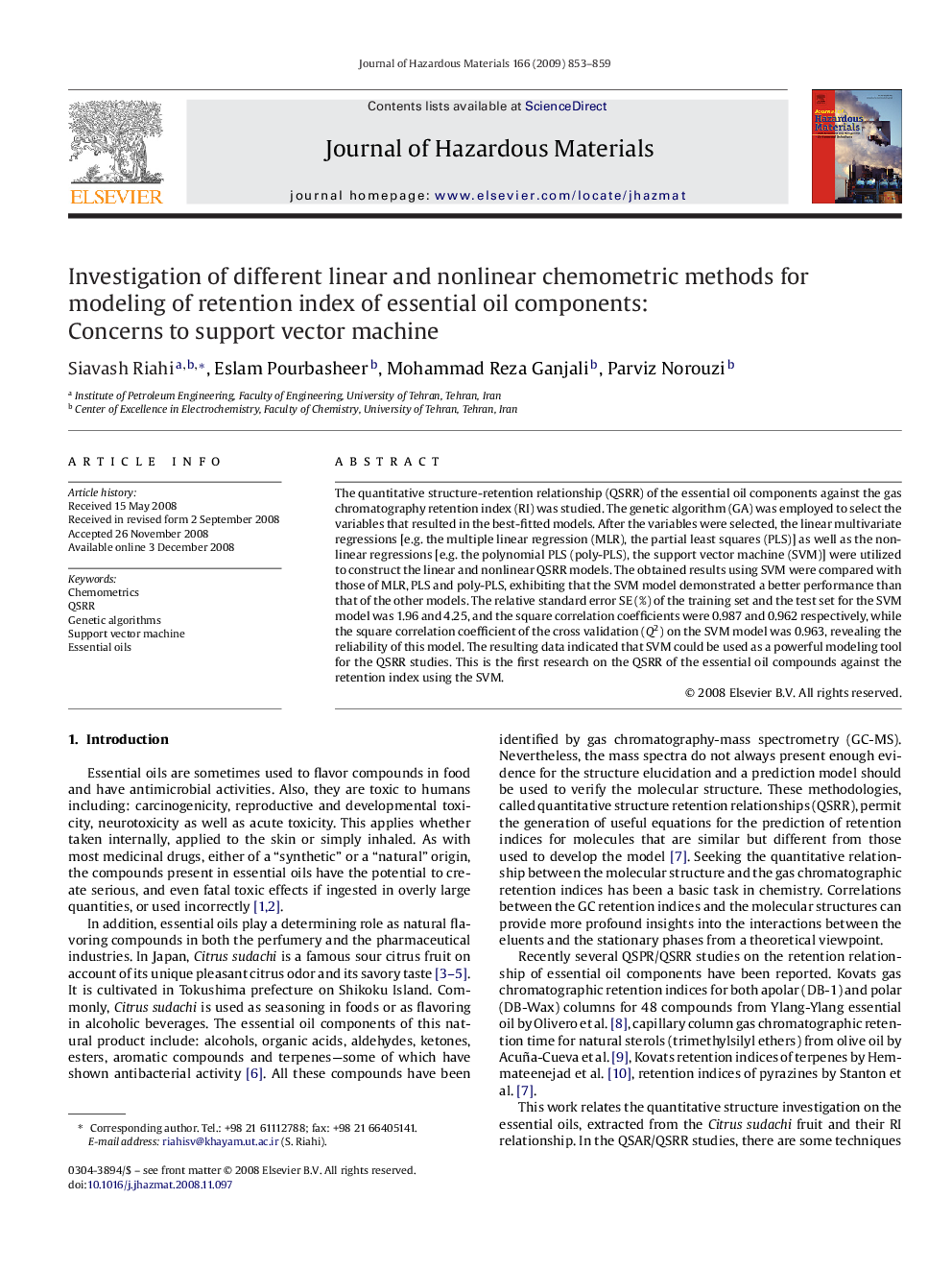| Article ID | Journal | Published Year | Pages | File Type |
|---|---|---|---|---|
| 582023 | Journal of Hazardous Materials | 2009 | 7 Pages |
Abstract
The quantitative structure-retention relationship (QSRR) of the essential oil components against the gas chromatography retention index (RI) was studied. The genetic algorithm (GA) was employed to select the variables that resulted in the best-fitted models. After the variables were selected, the linear multivariate regressions [e.g. the multiple linear regression (MLR), the partial least squares (PLS)] as well as the nonlinear regressions [e.g. the polynomial PLS (poly-PLS), the support vector machine (SVM)] were utilized to construct the linear and nonlinear QSRR models. The obtained results using SVM were compared with those of MLR, PLS and poly-PLS, exhibiting that the SVM model demonstrated a better performance than that of the other models. The relative standard error SE (%) of the training set and the test set for the SVM model was 1.96 and 4.25, and the square correlation coefficients were 0.987 and 0.962 respectively, while the square correlation coefficient of the cross validation (Q2) on the SVM model was 0.963, revealing the reliability of this model. The resulting data indicated that SVM could be used as a powerful modeling tool for the QSRR studies. This is the first research on the QSRR of the essential oil compounds against the retention index using the SVM.
Related Topics
Physical Sciences and Engineering
Chemical Engineering
Chemical Health and Safety
Authors
Siavash Riahi, Eslam Pourbasheer, Mohammad Reza Ganjali, Parviz Norouzi,
